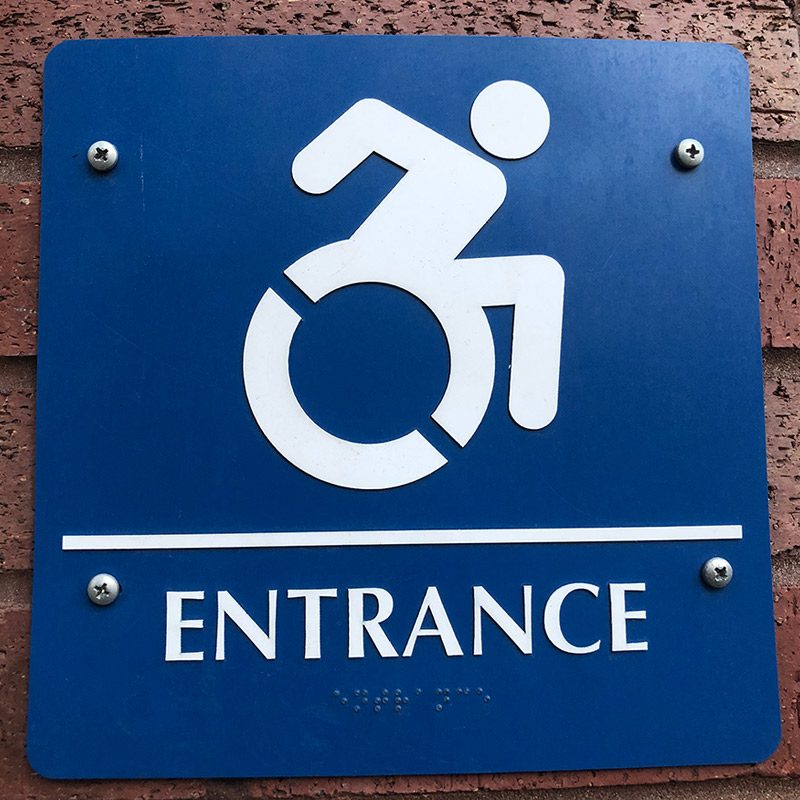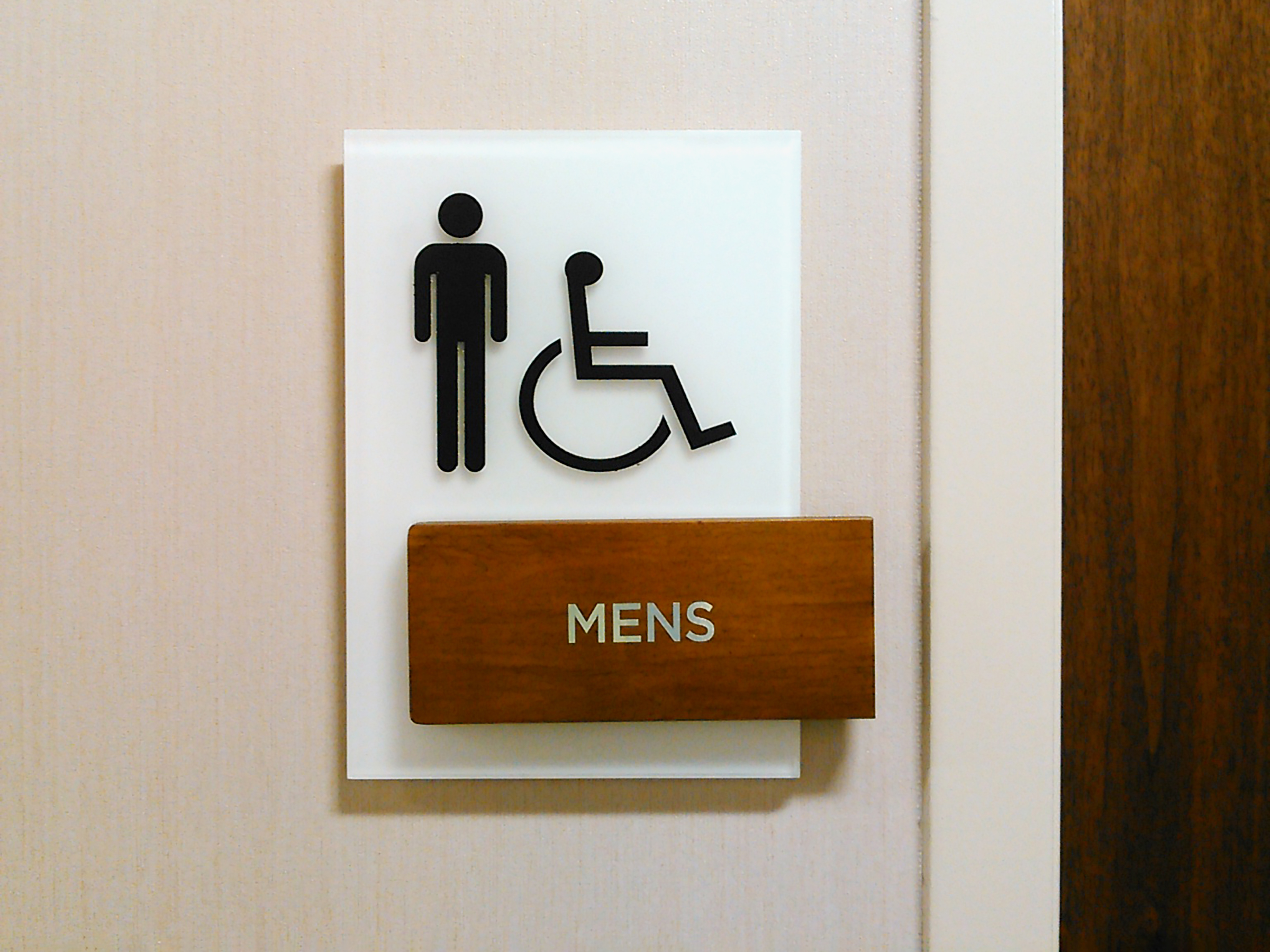Understanding the Regulations Behind ADA Signs
Exploring the Key Features of ADA Indications for Improved Availability
In the realm of access, ADA indications offer as silent yet powerful allies, making certain that areas are navigable and comprehensive for individuals with handicaps. By integrating Braille and responsive elements, these indications damage barriers for the visually damaged, while high-contrast shade schemes and readable fonts cater to varied aesthetic needs.
Value of ADA Conformity
Guaranteeing conformity with the Americans with Disabilities Act (ADA) is important for cultivating inclusivity and equivalent access in public areas and offices. The ADA, enacted in 1990, mandates that all public facilities, employers, and transport solutions accommodate individuals with impairments, guaranteeing they appreciate the same rights and chances as others. Conformity with ADA criteria not only fulfills legal responsibilities however additionally boosts a company's reputation by demonstrating its commitment to diversity and inclusivity.
One of the vital aspects of ADA compliance is the execution of easily accessible signage. ADA signs are designed to make certain that people with specials needs can easily browse via buildings and areas.
Furthermore, adhering to ADA laws can alleviate the risk of lawful consequences and potential penalties. Organizations that fall short to follow ADA standards might face penalties or claims, which can be both financially challenging and harmful to their public photo. Thus, ADA conformity is essential to cultivating a fair environment for everybody.
Braille and Tactile Elements
The incorporation of Braille and responsive elements into ADA signs symbolizes the concepts of availability and inclusivity. These features are crucial for individuals that are blind or visually damaged, allowing them to navigate public areas with better independence and self-confidence. Braille, a tactile writing system, is necessary in providing composed info in a layout that can be quickly viewed through touch. It is usually put beneath the matching message on signs to guarantee that people can access the details without aesthetic assistance.
Responsive components expand past Braille and consist of elevated icons and personalities. These elements are developed to be discernible by touch, allowing individuals to identify area numbers, toilets, leaves, and other vital areas. The ADA sets details standards relating to the size, spacing, and placement of these responsive components to enhance readability and make sure consistency across different environments.

High-Contrast Color Pattern
High-contrast color design play a pivotal duty in enhancing the exposure and readability of ADA signage for people with visual impairments. These schemes are vital as they make best use of the difference in light reflectance in between text and history, making sure that signs are conveniently discernible, also from a distance. The Americans with Disabilities Act (ADA) mandates the usage of particular shade contrasts to accommodate those with minimal vision, making it an important aspect of compliance.
The efficiency of high-contrast colors depends on their ability to attract the original source attention in various lights conditions, including poorly lit atmospheres and locations with glare. Normally, dark text on a light history or light message on a dark background is used to achieve ideal comparison. Black message on a white or yellow background gives a stark visual distinction that aids in fast recognition and understanding.

Legible Fonts and Text Dimension
When considering the design of ADA signage, the option of readable typefaces and appropriate text size can not be overstated. These elements are important for making sure that indicators come to people with aesthetic problems. The Americans with Disabilities Act (ADA) mandates that typefaces must be sans-serif and not italic, oblique, script, highly decorative, or of unusual kind. These needs aid ensure that the message is conveniently legible from a range which the characters are appreciable to diverse audiences.
According to ADA standards, the minimum message height should be see page 5/8 inch, and it needs to boost proportionally with viewing range. Consistency in message size adds to a cohesive aesthetic experience, aiding people in navigating atmospheres efficiently.
In addition, spacing between lines and letters is important to legibility. Appropriate spacing avoids personalities from appearing crowded, improving readability. By adhering to these requirements, developers can substantially improve access, guaranteeing that signs serves its designated objective for all individuals, no matter of their visual abilities.
Reliable Positioning Strategies
Strategic placement of ADA signage is crucial for taking full advantage of availability and making sure compliance with lawful standards. ADA standards specify that indicators must be installed at a height between 48 to 60 inches from the ground to guarantee they are within the line of view for both standing and seated people.
In addition, indications should be placed surrounding to the latch side of doors to allow simple identification prior to entrance. Consistency in indicator placement throughout a center improves predictability, reducing complication and enhancing overall customer experience.

Conclusion
ADA indicators play an essential role in advertising accessibility by integrating features that address the needs of individuals with disabilities. These elements jointly cultivate a comprehensive setting, emphasizing the relevance of ADA conformity in making sure equal access for all.
In the realm of accessibility, ADA signs offer as quiet yet effective allies, guaranteeing that areas are inclusive and accessible for people with handicaps. The ADA, established in 1990, mandates that all public centers, employers, and transportation solutions fit individuals with disabilities, guaranteeing they appreciate the exact same rights and opportunities as others. ADA Signs. ADA check that indicators are developed to guarantee that people with specials needs can easily navigate via areas and buildings. ADA standards state that signs must be placed at a height in between 48 to 60 inches from the ground to ensure they are within the line of view for both standing and seated individuals.ADA indicators play a crucial role in advertising ease of access by integrating attributes that deal with the demands of individuals with handicaps